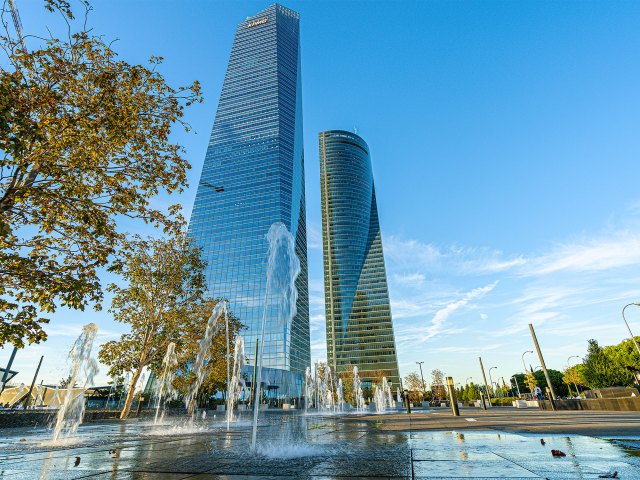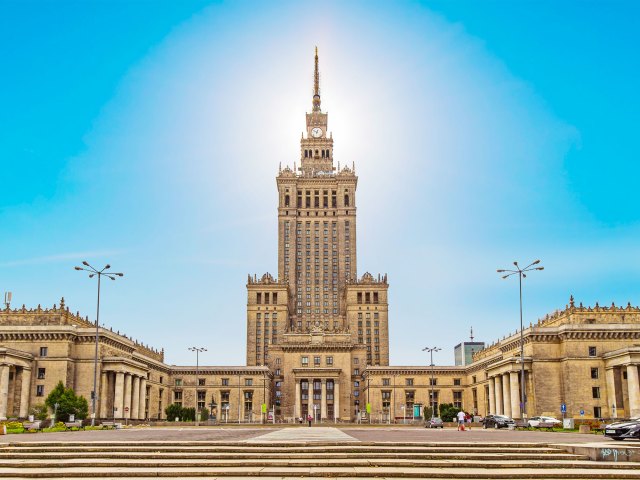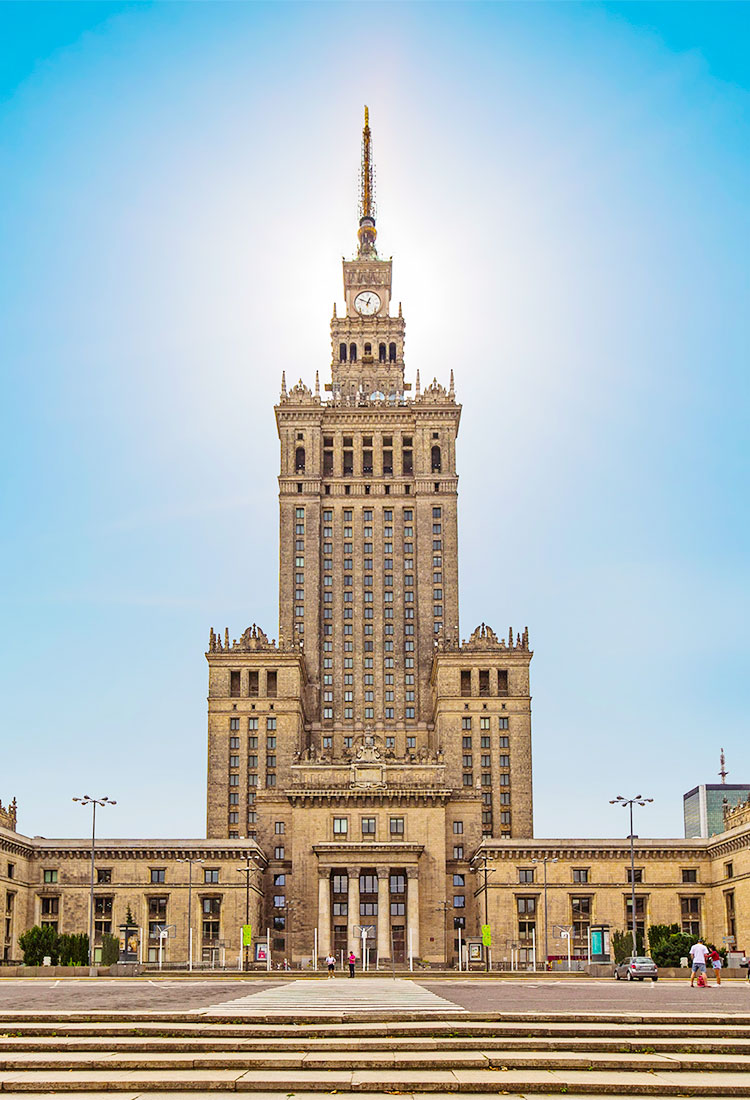In terms of sheer height, Europe’s tallest buildings pale in comparison to the titans of East Asia, North America, and the Gulf Coast (home to the world’s tallest building, Dubai’s 2,720-foot Burj Khalifa). Yet, new skyscrapers are springing up across the European continent, transforming and modernizing centuries-old cityscapes and continually reaching towards the sky. From Warsaw to Madrid, here are some of Europe’s loftiest towers.
The Shard – London, U.K.

Towering 1,016 feet above London, the Shard is the tallest building in Great Britain, standing almost as high as New York’s Chrysler Building. Designed by architect Renzo Piano, this graceful skyscraper has dominated the city’s skyline since it opened in 2013. The Shard comprises offices, restaurants, a five-star hotel, and some of the most sought-after residential apartments in London. The View from the Shard has become one of the city’s most popular tourist attractions, thanks in part to the panoramic views of the London skyline offered from its outdoor viewing platform on the 72nd floor. When the weather is clear, visitors can see for miles in every direction. On those frequent days when low cloud shrouds the U.K. capital, the Shard’s piercing spire is isolated above a sea of white. Fortunately, tickets are sold with a view guarantee: If you can’t see at least three landmarks during your visit (of the London Eye, the Walkie Talkie building, the Tower Bridge, One Canada Square, and St. Paul’s Cathedral), you’ll be issued a free pass to return when visibility improves.
Tour First – Paris, France

The highest tower in Paris is its most famous structure: the 1,083-foot Eiffel Tower. But if we include only habitable buildings on this list, then we need to travel out to La Défense, a business district about seven miles northwest of the city center. Of its 72 glass and steel buildings, 19 are classified as skyscrapers, the tallest being Tour First. Constructed in 1974 and formerly called the AXA Tower, Tour First measures an impressive 758 feet and boasts 50 floors. However, the new Tour Hekla, the work of French architect Jean Nouvel, isn’t far behind its recently revamped rival. It’s the only other skyscraper in La Défense taller than 700 feet and has just one less floor than Tour First.
Commerzbank Tower – Frankfurt, Germany

Germany’s tallest habitable building graces the financial district of Frankfurt — an area some have dubbed Bankfurt or Mainhattan (the city sits on the Main River) due to the presence of so many financial institutions and high-rise buildings. Of them, Commerzbank Tower is the tallest — the 56-story, 850-foot–high office building is also the second-highest skyscraper in the European Union, after the Varso Tower in Warsaw, Poland. The Commerzbank Tower’s nine sky gardens are not only beautiful but also functional, as they allow in natural light. The building is the work of acclaimed British architect Norman Foster, responsible for other high-profile projects such as the reimagined Reichstag in Berlin, the Millau Viaduct in France, and the Hearst Tower in New York City. The Commerzbank Tower noses ahead of another notable Frankfurt skyscraper, the Messeturm, which is only seven feet shorter.
Unicredit Tower – Milan, Italy

Argentine-American architect César Pelli is known for his designs of the World Financial Center (now called Brookfield Place) in New York City and Malaysia’s twin Petronas Towers. He was also the visionary responsible for Italy’s highest skyscraper, the Unicredit Tower, which opened in 2012 and stands 758 feet above Milan. However, its ranking owes a lot to the incorporation of its 255-foot spire into its design. The 686-foot Allianz Tower, another Milanese skyscraper, is actually taller if you count only usable space. Nevertheless, locals and tourists probably wouldn’t want to get rid of the Unicredit Tower’s spire— it is outfitted with thousands of LED lights, which change color according to key events and festivals.
Torres de Cristal – Madrid, Spain

Also designed by César Pelli, Torre de Cristal has a name that translates to “Glass Tower,” a fitting moniker for this gleaming glass-and-steel structure that graces Madrid’s Cuatro Torres business area. The neighborhood was built in 2004 on land vacated after being used as Real Madrid’s training ground. Contrary to what its name suggests (cuatro means “four” in Spanish), the district now features a total of five skyscrapers. Torre de Cristal, the highest of them, soars to a height of 817 feet — two feet taller than the Norman Foster-designed Torre Cepsa. The first tower to be finished, in 2007, was the Torre Emperador (originally known as Torre Espacio). Completing the awesome quintet are Torre PwC, home to accounting firm PricewaterhouseCoopers, and Caleido, the latest addition unveiled in 2021.
Palace of Culture and Science – Warsaw, Poland

When Warsaw’s 1,020-foot Varso Tower topped out in 2022, it officially became the tallest building in the EU. However, it’s the Palace of Culture and Science that is perhaps still the Polish capital’s most recognizable landmark. This magnificent 778-foot-high building was constructed in the early 1950s by Soviet builders working to a design by Polish architects. A gift from the Soviet Union to Poland, it was initially Joseph Stalin’s Palace of Culture and Science, but it no longer bears the name of the former Russian dictator. Though it was built as a symbol of socialist power, the Palace’s opulent interior boasts marble floors, glass chandeliers, and lavish gilding. Today it’s a major entertainment venue, housing a casino, cinema, concert hall, theaters, museums, and bars. Visitors can head up to the 30th-floor terrace for an unrivalled view over Warsaw.
More from our network
Daily Passport is part of Optimism, which publishes content that uplifts, informs, and inspires.























